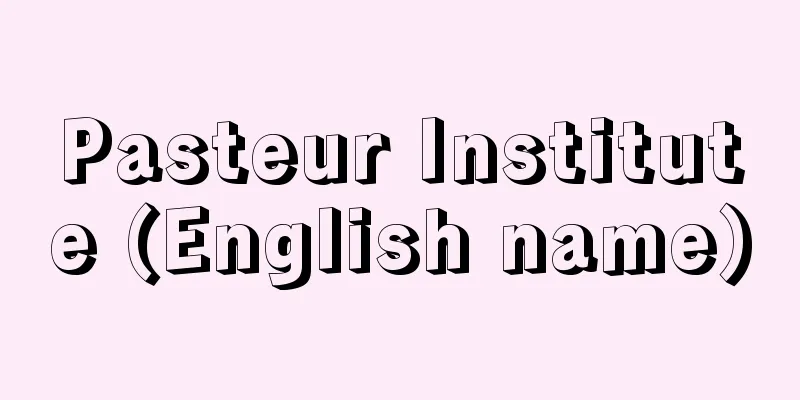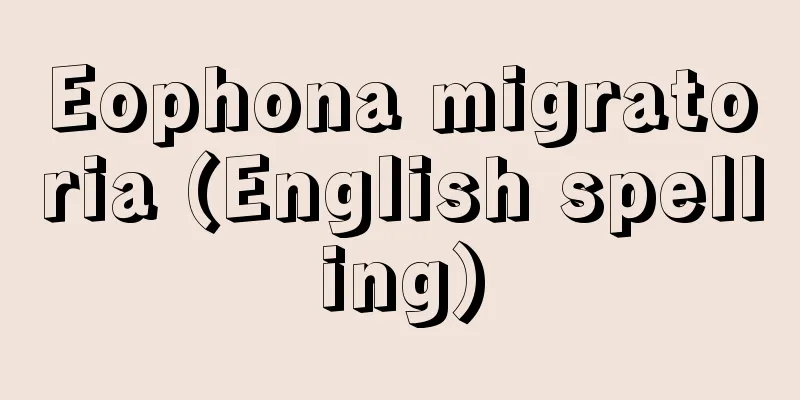Pasteur Institute (English name)

|
A scientific institute built in Paris in November 1888 with donations from around the world to commemorate Pasteur's establishment of a method for preventing rabies. Pasteur served as director from its establishment until his death in 1895. The original building is now the Pasteur Museum, where all of his laboratory equipment, including the microscopes he used, are perfectly preserved, as well as the "swan-neck flask" he invented to disprove the theory of spontaneous generation, morphological diagrams of microorganisms such as lactic acid bacteria and yeast for research presentations, and diagrams of silkworms. There are institutes all over the world that bear the name of Institut Pasteur, but the Institut Pasteur in Paris forms a network of 30 institutes, linked by a common purpose, common philosophy and common values in scientific research, public health and education, in Algeria, the Central African Republic, Cameroon, Senegal, Morocco, the United States, Canada, Uruguay, Cambodia, China, South Korea, Iran, Romania, Greece, Italy, Russia, Bulgaria and New Caledonia. In addition to research departments for microbiology, blood therapy, and biochemistry, the Institut Pasteur also has facilities for training medical scientists and a hospital for clinical treatment. In the 100 years since its founding, the institute has conducted numerous outstanding research projects and produced many outstanding researchers. Pasteur's direct disciple Charles Chambeland (1851-1908) was a collaborator in the development of the rabies vaccine and the inventor of the filter, while fellow collaborator P. Roux discovered diphtheria toxin with Ersan in 1888, and Metchnikoff, the second director of the institute, discovered the phagocytosis phenomenon of white blood cells, establishing the origins of the theory of cellular immunity. In 1894, Ersan discovered the plague bacillus in Hong Kong independently of Kitasato Shibasaburo, and his name was included in the scientific name. Between 1896 and 1899, Bordet discovered complement, elucidated the mechanism of immunological hemolysis, and later invented the complement fixation reaction method, which sparked the development of immunoserology. He opened the Pasteur Institute in Brussels, and in 1906, together with Octave Gengou (1875-1957), discovered the pertussis bacterium. In 1909, C. Nicol proved the transmission of rash typhus by lice at the Institut Pasteur in Tunis, in 1917 Felix D'Herelle (1873-1949) discovered bacteriophages, in 1921 Calmette and Camille Guérin (1872-1961) began the BCG vaccination, and between 1922 and 1926 Gaston Ramon (1886-1963) developed the flocculation method and succeeded in quantifying diphtheria toxin and antitoxin in vitro, and also developed a method of human immunization using anatoxin, a diphtheria toxin inactivated with formalin. Other works include Monod's research on enzymatic adaptation and the mechanism of inducible enzyme biosynthesis, Lwoff's publication of the concepts of ultraviolet-induced lysogens and prophages, Lewin's development of the inactivated polio vaccine, Udanga's development of the gel diffusion method and immunochemical analysis of immunoglobulins, and Monod and Jacob's research on the mechanism of protein biosynthesis and the regulation of enzyme biosynthesis and their activity. [Tsunezaburo Fujino] [References] | | | | | | | | | |Source: Shogakukan Encyclopedia Nipponica About Encyclopedia Nipponica Information | Legend |
|
パスツールによる狂犬病予防方法の確立を記念し、1888年11月、世界からの醵金(きょきん)によってパリに建てられた科学研究所。パスツールは設立以来、死去の年(1895)まで所長を務めた。創設時の建物は現在パスツール博物館となっており、彼が使用した顕微鏡はじめ各種実験器具類が完全に保存されているほか、自然発生説否定のために創案した「ハクチョウの首型フラスコ」や、研究発表のための乳酸菌・酵母などの微生物形態図、カイコの図なども保存されている。 パスツール研究所を名のる研究所は世界各地にあるが、パリのパスツール研究所とネットワークを形成しているのは30の研究所で、科学的研究、公衆衛生、教育という共通の使用、共通の理念、共通の価値観で結び付いている。アルジェリア、中央アフリカ共和国、カメルーン、セネガル、モロッコ、アメリカ、カナダ、ウルグアイ、カンボジア、中国、韓国、イラン、ルーマニア、ギリシア、イタリア、ロシア、ブルガリア、ニュー・カレドニアなどにある。 パスツール研究所には、微生物研究、血液療法研究、生物化学研究などの研究部門のほか、医学者養成の施設、臨床治療のための病院などがある。創立以来、約100年間に数々の優れた研究を行い、優れた研究者を輩出してきた。パスツールの直弟子シャンベランCharles Chambeland(1851―1908)は狂犬病ワクチン開発協力者で濾過(ろか)器の創案者、同じく協力者のP・ルーはエルサンと1888年にジフテリア毒素を発見、第2代所長メチニコフは白血球の食作用現象を発見、細胞性免疫理論の原点を確立した。エルサンは1894年に香港(ホンコン)において北里柴三郎(きたさとしばさぶろう)とは独立にペスト菌を発見、学名にその名を残した。ボルデは1896年から1899年の間に補体を発見、免疫学的溶血現象の機序を解明、のちに補体結合反応術式を創案し免疫血清学発展の契機をつくった。彼はブリュッセルのパスツール研究所を開設し、1906年にはジェヌOctave Gengou(1875―1957)と共同で百日咳(ぜき)菌を発見した。1909年C・ニコルはチュニスのパスツール研究所でシラミによる発疹(はっしん)チフス伝播(でんぱ)を証明、1917年デレルFelix D'Herelle(1873―1949)はバクテリオファージを発見、1921年カルメットとゲランCamille Guérin(1872―1961)はBCG接種を開始、1922年から1926年の間にラモンGaston Ramon(1886―1963)はフロッキュレーション法を開発してジフテリア毒素と抗毒素の試験管内定量に成功、またホルマリンによる不活化ジフテリア毒素アナトキシンによる人の免疫法の開発も行った。そのほか、モノーの酵素的適応と酵素の誘導的生合成の機序の研究、ルウォフの紫外線による溶原菌とプロファージ概念の発表、レビンの不活化ポリオワクチンの開発、ウダンガのゲル内拡散法の開発と免疫グロブリンの免疫化学的分析、モノーとジャコブのタンパク生合成の機構および酵素生合成とその活性の調節についての研究などがある。 [藤野恒三郎] [参照項目] | | | | | | | | | |出典 小学館 日本大百科全書(ニッポニカ)日本大百科全書(ニッポニカ)について 情報 | 凡例 |
Recommend
treaty
…With the organization of the international commu...
Standing sign - Okikanban
〘 noun 〙① A signboard that is set up like a partit...
Wood contract - Mokkei
〘Noun〙 Under the Ritsuryo system, a tag placed in ...
Chemical exploration - geochemical exploration
A mineral exploration method that estimates the p...
Pledge - Pledge
〘noun〙① To make a promise by oath. Also, that prom...
Marechal, L.
… In the end, Latin American literature reached i...
Permanent Embryogenesis
…the shoot apical meristem continues to form tiss...
Malcolm Hearn
1833‐1908 A modern Iranian reformist. Born into an...
Tortoiseshell beam - Tortoiseshell beam
…In 1842 and 1843, the two new theaters were buil...
Tsubo - Pot
〘Noun〙 [1]① Courtyard. Refers to a garden between ...
Pyrosulfuric acid
...The chemical formula is H 2 S 2 O 7 . It is al...
General average - General average
Damages and expenses incurred by dispositions mad...
Lagoon
Also called a lagoon. A shallow lake formed when p...
Hemitragus jemlahicus (English spelling) Hemitragusjemlahicus
…[Tadaaki Imaizumi]. … *Some of the terminology t...
Allium virgunculae (English spelling) Allium virgunculae
… [Mitsuru Hotta]... *Some of the terminology tha...









